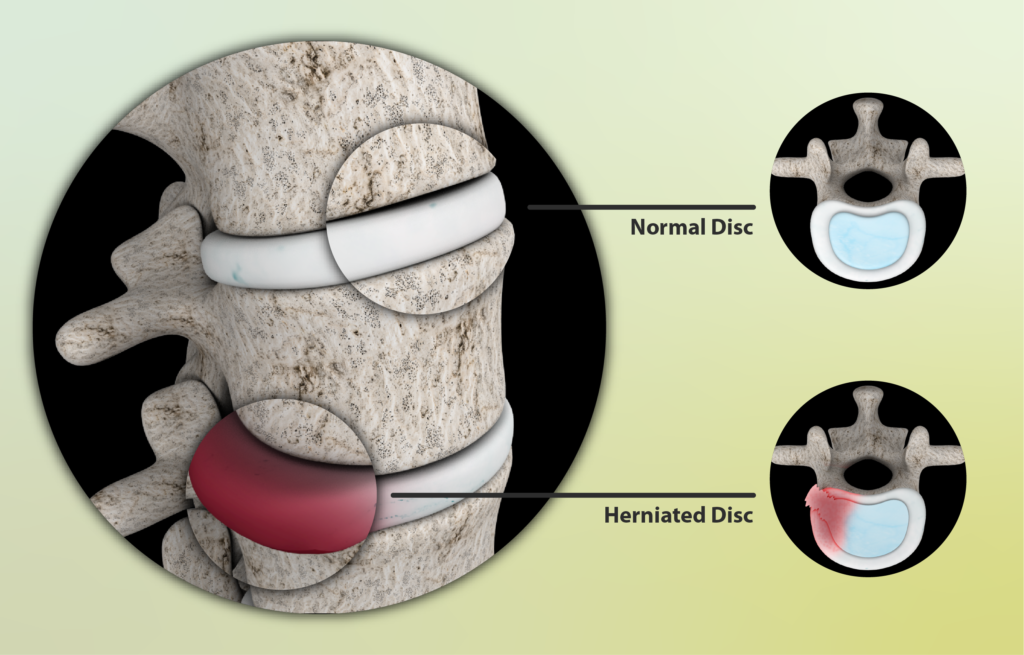Table of Contents
Minor tweaks in the squat and deadlift for MAJOR results
Sure, you got the broad concepts of squatting and deadlifting down, but what about some of the nitty-gritty details?
You know, the finer things.
Have you wondered if…
- Buttwinking is safe or will it break you?
- There’s a way to build squat depth in someone with SUPER STIFF hips?
- Mixed grip deadlifting can create changes within the body?
For each of these questions, various principles we’ve discussed in the past play a role.
In some cases, buttwink may be a normal component of the squat.
Attacking hip mobility in a specific order may better help improve squat depth
Mixed grip deadlifting can be GREAT for improving rotational capabilities.
Let’s fine-tune these wonderful movements to get the most out of them.
Check out Movement Debrief Episode 135 below.
Watch the video below for your viewing pleasure, or listen to the podcast if you can’t stand the sight of me 🙁
and the audio version:
If you want to watch these live, add me on Instagram.

 t
tShow notes
Check out Human Matrix promo video below:
Below are some testimonials for the class:
Want to sign up? Click on the following locations below:
February 20th-21st, 2021, Atlanta, GA (Early bird ends January 17th at 11:55 pm!)
April 10th-11th, 2021, Warren, OH (Early bird ends March 14th at 11:55 pm)
May 29th-30th, 2021 Boston, MA (Early bird ends April 25th at 11:55 pm!)
August 14th-15th, 2021, Ann Arbor, MI (Early bird ends July 18th at 11:55 pm!)
September 25th-26th, 2021, Wyckoff, NJ (Early bird ends August 22nd at 11:55 pm)
November 6th-7th, 2021, Charlotte, NC (Early bird ends October 3rd at 11:55 pm)
Dickinson College in Carlisle PA (POSTPONED DUE TO COVID-19) [Approved for 14 Category A CEUs for athletic trainers]
Montreal, Canada (POSTPONED DUE TO COVID-19) [6 CEUs approved for Athletic Therapists by CATA!]
Or check out this little teaser for Human Matrix home study. Best part is if you attend the live course you’ll get this bad boy for free! (Release date not known yet 🙁
Here is a signup for my newsletter to get nearly 5 hours and 50 pages of content, access to my free breathing and body mechanics course, a free acute:chronic workload calculator, basketball conditioning program, podcasts, and weekend learning goodies:
[yikes-mailchimp form=”1″ submit=”Get learning goodies and more”]
The lumbar and sacrum movement pattern during the back squat exercise – This article outlines spinal mechanics during back squatting, implicating that the lumbar spine becomes kyphotic during the movement.
Is Spinal Flexion Bad? – This provides an evidence overview on whether or not spinal flexion is a safe position. It’s a close to a diss track as we will get in rehab.
The Spinal Engine – This book takes a completely different look at the function of the spine as a mobile area, not a stiff supporting structure. The research presented in this is quite profound.
Which Limitations to Treat First? – The infrasternal angle dictates we should focus on certain limitations in some people, others in those who are built differently. This debrief provides the guide.
Heel Ramp – This ramp is the best in the biz to improve your ability to squat deep. I coach all my clients on this ramp.
Elevate Sports Performance and Healthcare – This is the spot that I work at in Las Vegas. We’ve built a cool model because we integrate several disciplines to help our clients reach their goals like whoa!
A review of the biomechanical differences between the high bar and low bar back squat – This article mentions how trunk lean changes depending on what shoes you wear.
The torso integration hypothesis revisited in Homo sapiens: Contributions to the understanding of hominin body shape evolution – This article looks at how different our ribcage and ilial shapes are.
Butt wink during squats
Question: Quick question about squatting. I know the stack is important but what are your thoughts on “butt wink” especially when loaded?
I’m not sure if I’m getting a good view here but it looks like some lower lumbar flexion at the bottom.
I know Stuart McGill is big time against this and has his research with loaded posterior pelvic tilts which caused a lot of pain. So I just wanted some clarification or some perspective if you have the time!
Answer: Ahh that dreaded butt wink. A wink that catches your eye in all the wrong ways.
But is it a bad thing?
For those who do not know, the butt wink is when you have what appears to be a dramatic posterior pelvic tilt at the bottom of the squat. It looks like this:
The buttwink is most commonly seen on the back squat, although can be seen on other squat variations as well.
Ideally, a squat should involve vertical pelvic displacement along with maximal sacral counternutation.
While there isn’t much research I could find that looked at exactly what is biomechanically happening with a buttwink. I hypothesize that it is likely increased lumbar flexion that occurs at the sticking point of the squat in order to attain depth and increase verticality. Sacral counternutation is subtle, lumbar flexion is dramatic.
The reason why the buttwink is most common in back squats has to do with bar placement. The bar position on the back pushes the thoracic spine forward, increasing extension. Since the thoracic spine and sacrum have matching curvatures, there is likely an increase in sacral nutation at the starting position. This position is likely why the back squat is a tad more hinge-y than other variations.
However, you still have to hit depth, fam. So if counternutation is HELLA tough because of the starting position, I can create vertical pelvic displacement by flexing the lumbar spine. In fact, we see this in the research. As soon as a barbell goes on the back, the lumbar spine becomes kyphotic. Totally out of your control, and these authors argue doing the converse may negatively impact squat performance. SORRY!!!!!
These thoughts lead me to believe that buttwink during a back squat is likely normal (GASP).
But wait, isn’t spinal flexion bad?!?!?!?!?!?!

We really don’t know. While there are some in vitro experiments demonstrating flexion being bad for the discs, in vivo research does not seem to demonstrate any issues with loaded flexon whatsoever (I deep dived into this topic here). However, there aren’t really any in vivo studies looking at lifting heavy loads with lumbar flexion.
Does that mean McGill and flexion-phobia win???
NOT NECESSARILY
Reading The Spinal Engine (and the studies within this great book) has really made me realize just how controversial and unclear the in vitro studies on spinal health are.
According to research in this book, it appears as though compression (as we notice with axial loading) is not necessarily sufficient for disc or spinal injury. In fact, inducing some lumbar flexion with lifting may better allow us to recruit thoracolumbar fascia and posterior ligamentous structures to assist in lifting heavy ass weights!
Muscles alone, especially the erector spinae, cannot produce sufficient force to move the weights we are trying to lift when it comes to back squatting. Therefore, recruiting other tissues to assist in the lift is ESSENTIAL.
We may only be able to lift maximally with some degree of spinal flexion, which can be attained via a posterior pelvic tilt.
I would argue then tucking to some degree is not only safe but likely required to squat well. The buttwink is the body’s best way to attain that position given the constraints the back squat provides.
Ideally, we ought to see less buttwink in anteriorly loaded squat variations, as these exercises allow for better verticality and place the sacrum in less nutation. For these moves, tuck with reckless abandon, with a caveat!
Ideally, you want the tuck to occur predominately in the sacrum to enhance squat verticality. If you overflex at the lumbar spine, the pelvis will translate forward and be anterior relative to the thorax. This translate into:
UHHH FAM, YOU CAN’T STACK
I’ve been emphasizing this subtle change over the last month, and anecdotally the clients that both my colleagues and I work with have noticed favorable changes.
Tucking with the lumbar spine was likely the issue I had made with a lot of the heavy lifting bros who ended up getting some back discomfort when they tried to “tuck” on their squats. The problem was they couldn’t get the tuck through the pelvis, then they loaded their spine in a position that they weren’t well adapted to, and problems ensued. (My fault, fam).
Making the movement more sacral (think tailbone pulled to the ground), would likely change the response these peeps had to the squat.
Squatting deep with restricted hips
Question: If someone is clearly a better hinger than a squatter, has only 5 degrees hip IR, and also limited hip ER, which would you attack first? I know you said if you go after primary compensation first interventions can be less successful, so I want to make sure I get this right from the start.
Answer: Building the squat is WAY important, as being able to hit it @$$ to Gra$$ is an expression of being able to eccentrically orient the posterior aspect of your body.
Yet, one of the hardest peeps to get the squat on point with is those who have multidirectional hip limitations. It’s especially tough because the squat requires movement into both internal and external rotation.
So what to do? I’M GLAD YOU ASKED!
The first starting point to determine the order of operation is the infrasternal angle (ISA). The ISA will help you determine whether the internal or external rotation loss is the secondary compensation. Secondary compensations ought to be targeted first.
Secondary compensations are as follows for each ISA:
- Narrow ISA: Decreased external rotation
- Wide ISA: Decreased internal rotation
If you want to increase external rotation, you have to target posterior expansion. High or low depth hip flexion activities are money. A simple high depth squat could be a good starting point:
Internal rotation restrictions require anterior expansion to occur. For this, you are either looking at mid-range hip flexion exercises or driving hip extension:
If you want to target both internal AND external rotation limitations simultaneously, sidelying exercises are absolutely money. The reason being is because gravity will push the viscera downward, letting the goods do the pelvic expansion for you!
Hip shifting can also be quite effective at driving anteroposterior pelvic expansion. Hip shifting is merely pelvic rotation, which requires both anterior and posterior expansion. Just like in the thorax!
When you hip shift to the left, you will get left posterior expansion and right anterior expansion. This move is great for that:
Make sure you stack before you shift though fam, otherwise it’ll fail miserably.
Lastly, once you’ve ironed out the movement restrictions, you should probably practice squatting.
To make your squats EASY AF, I would strongly recommend elevating the heels:
How do mixed grip deadlifts influence movement?
Question: Would lots of exposure to HEAVY mixed grip deadlifts influence the infrasternal angle (ISA) over time?
I have a few clients with asymmetrical ISA (wide right, narrow left) who are strong (200kg+ deadlifts) and they all historically have opted for right hand supinated, left pronated especially for near-maxes.
I guess it could be a chicken-egg situation where they opt for that strategy based on structural constraints, or the structure is re-inforced by that strategy?
Answer: We don’t have any studies to demonstrate if the infrasternal angle (ISA) can be changed with particular activities, or if a particular ISA biases someone towards certain activities.
We must also factor in that some asymmetry within the ISA is normal secondary to our asymmetrical organ anatomy.
Interestingly enough though, I think we can see some links between the asymmetrical ISA listed above and the preferential grip.
Asymmetry in ISA presentation is likely due to spinal sidebending. In the above case, the spine would have a leftward sidebend through the thorax.
Though not perfect and differ within a few factors (sagittal plane orientation, rotational center, etc), Fryette’s laws would dictate that sidebending and contralateral rotation are paired mechanics in the thoracic spine (Type I mechanics). This position would be considered a normal finding in the human spine, as organ asymmetry creates a rightward spinal rotation in this region.
Guess what folks??? A supinated right arm and pronated right arm would also rotate the spine to the right. I would argue this grip is likely favoring the normal asymmetry that is present in us all.
To offset this asymmetrical presentation (especially if movement options are lost), activities that rotate the spine left can be quite helpful. Aside from switching your deadlift grip up from time to time, the squat variation below would be a prime example:
Sum up
- Butt wink involves lumbar flexion to help attain a vertical position during squatting and in some variations (i.e. back squats) is normal.
- Improve squat depth by addressing secondary compensations first, working on anteroposterior pelvic expansion, and squatting
- Asymmetry in the infrasternal angle is normal, and may contribute to preferences in deadlift grip per Fryette’s Laws of spinal mechanics.
